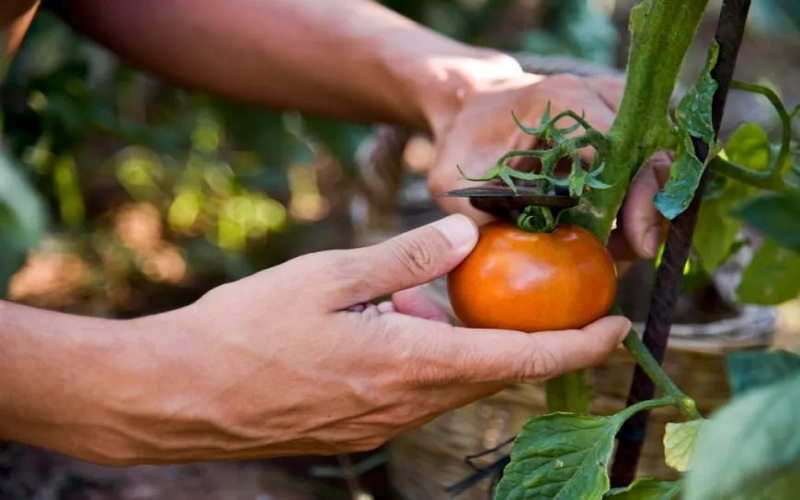When fall’s first crisp days arrive, those of us who still have tomatoes growing in pots start keeping a closer eye on the 10-day forecast. The clock is ticking, and the annual race to the first frost begins.
Will those beefsteaks have time to mature on the vine? What are we going to do with the remaining green tomatoes in the garden? When will we get the first frost?
Put on your gardening gloves and grab a trowel, tomato grower; we have 9 fall tasks to complete and many decisions to make about the fate of your crop this year.
How to Prevent Frost Damage to Tomatoes
Before the first frost is predicted, it’s wise to have a plan in place. Whether or not you want to put in the time and energy to protect your plants depends on how much harvest you still expect from your garden.
Cover your plants before dew falls for the best results. Depending on your location, you may need something more substantial than a few extra bed sheets, such as a tarp or mylar emergency blanket. Any plastic should have an insulating fabric layer beneath it. Plant cells that come into contact with plastic can still freeze. Purchase some frost cloth to protect your remaining tomatoes from the impending frost.
The next obvious dilemma is what to do with the unripe fruit still attached to the vine. Is it possible to let those tomatoes mature on the vine, or should they be picked while still green?
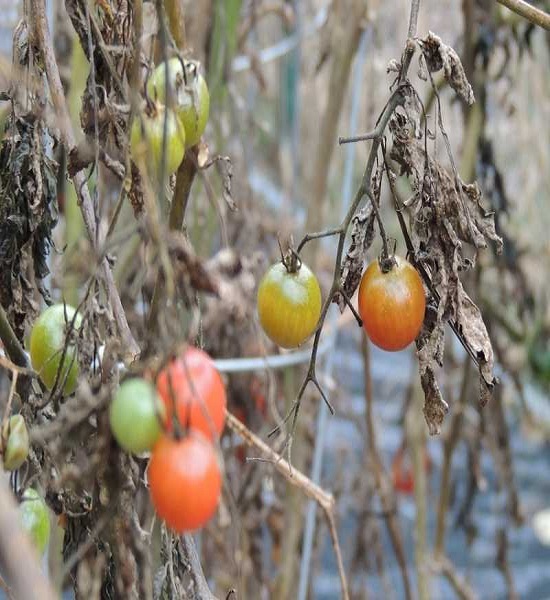
How to Let Tomatoes Ripen On and Off the Vine
Tomatoes ripen mostly due to heat, therefore when temperatures drop, it takes them longer to mature. Also, when autumn approaches, there may still be plenty of green fruit on your plants unless you harvest it.
If you select your tomatoes when they are only halfway ripe, they will continue to ripen as they sit in your kitchen. As the temperature outside drops, the first thing to do is gather all the almost ripe tomatoes you can and bring them inside to a safe and warm location. They will ripen in a cardboard box over the course of a few days.
Still-maturing tomatoes could benefit from additional time in the polytunnels.
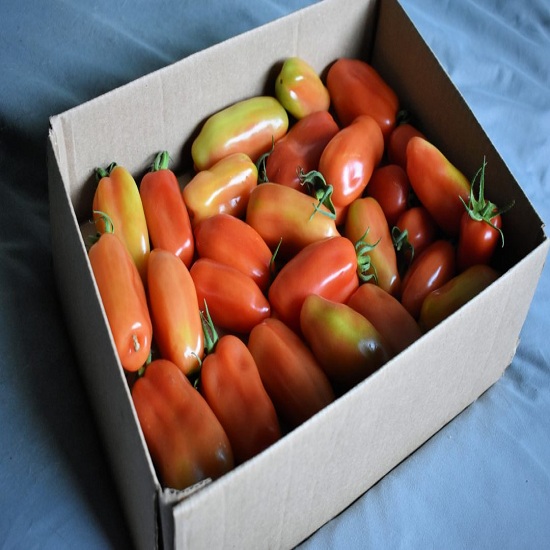
What Should You Do With All of Those Green Tomatoes?
Even if you’ve harvested every ripe tomato and waited for the rest to ripen, you may still end up with a huge crop of green tomatoes. Green tomatoes are a distinct food crop because they are often more flavorful than their red counterparts. There are many available online recipes for green tomatoes that you can easily try.

Extend the Growing Season
There are ways to extend the growing season if you aren’t ready to give up just yet and you want to get the most out of your tomatoes.
Tomato yields are heavily influenced by a number of factors, including whether determinate or indeterminate varieties were planted. You might not have a choice with determinate tomatoes. After they harvest their primary crop, they may grow a few more tomatoes here and there, but that’s it for the season.
If the weather stays warm, indeterminate tomato plants will keep expanding and bearing fruit. The question then becomes how to maintain it warm enough to sustain their development. You have choices!
It is a good idea to bring potted plants inside the greenhouse if you have one. If your plants are outside, you can protect them from the weather by installing polytunnels. There are also some clever ways to heat your polytunnels to raise the temperature inside.
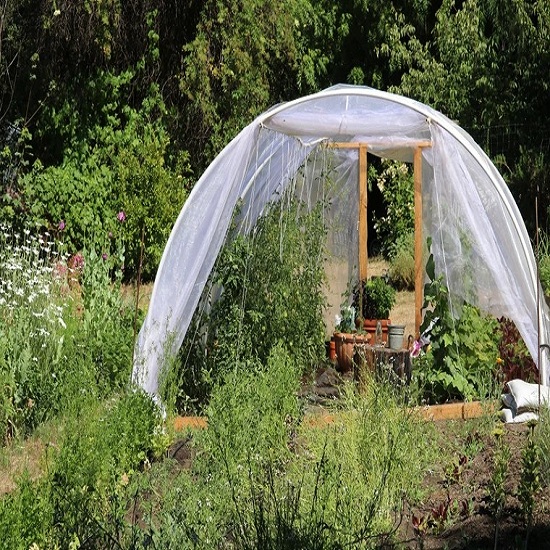
Get a Head Start Next Year with a Clone
Just clone a few of your existing tomato plants and watch your neighbors go crazy while you gain a head start on next year’s growing season. It only takes a few minutes to clone a whole plant, and by the following spring, you’ll have a robust crop of tomatoes. All you need to do is stick a stem in the ground.
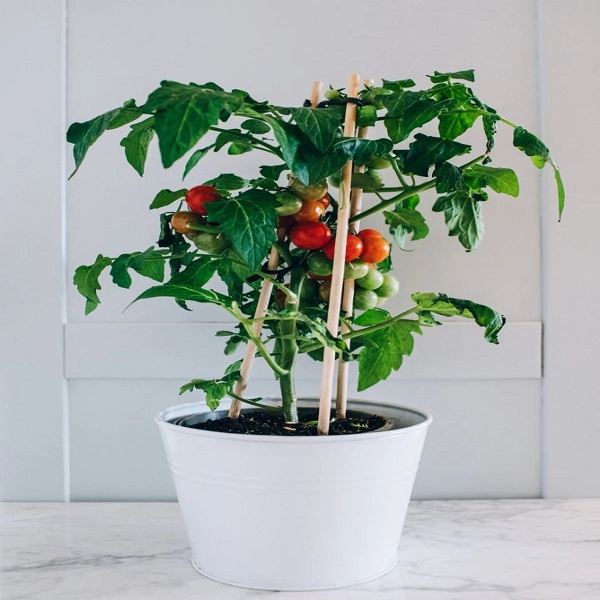
Overwintering Tomatoes
If you’re a committed tomato gardener, you might even want to think about bringing some plants inside for the winter. Tomatoes, contrary to popular belief, are long-lived plants. Most of the world grows tomatoes as annuals, although in their native habitats, they last for years.
It is recommended that only healthy plants be used for overwintering tomatoes. A strong tomato plant is essential for surviving the winter. As for when to start the process, it is best to do so a month before the first anticipated frost.
If you’re growing tomatoes in containers, simply bring them inside for the winter. Expect to see no fresh blossoms or fruit when inside; our homes don’t get enough light in the winter. However, keeping a tomato plant inside where it is protected from the cold and snow will allow you to replant it outside in the spring.
If you want to overwinter tomato plants that are already established in your garden, you will need to transplant them. In this case, transplant shock occurs at the same rate as in the spring.
Tomatoes do best when transplanted after being pruned. After a week, dig out the plant and replant it in a large container outdoors. The rootball should be kept intact if at all possible. Remember, plants need a big root system to support a big canopy. This is why it’s critical to prune the tomato first.
*Your plant will recover faster if you bring it inside after repotting and give it plenty of water until it blooms again.
Bare Root Tomatoes
There is another solution if you find the idea of overwintering a huge tomato plant in your living room unappealing. The plant can be severely pruned back, dug up, and overwintered as a bare root. The tomato will enter a state of dormancy if you use this method.
First, prune the plant so that just the main stem(s) remain, leaving them between a half and a foot in length. Then you should either pull the plant out or dig it up. Clean it up as much as you can by knocking dirt off of it. In order to survive the winter, the roots must be kept damp and warm. A t-shirt you no longer wear and some sphagnum moss, shredded paper, or coconut coir are all you need to make this.
Spread out the T-shirt. Then, fill the middle with a few handfuls of paper, moss, or coir. Place the tomato on the tee so that its bare roots can nestle in the fabric. Cover the roots with a thick layer of paper, moss, or coir. After spraying this mass with water, roll it up in the t-shirt and place it at the tomato plant’s root zone. Put the dampened t-shirt and the rest of the bundle into a plastic grocery bag and tie it around the plant’s base.
After the plants have been prepared, store them in paper bags and keep them in a cool, dark location like a basement or garage. Once the frost risk has passed in the spring, plant the tomatoes.
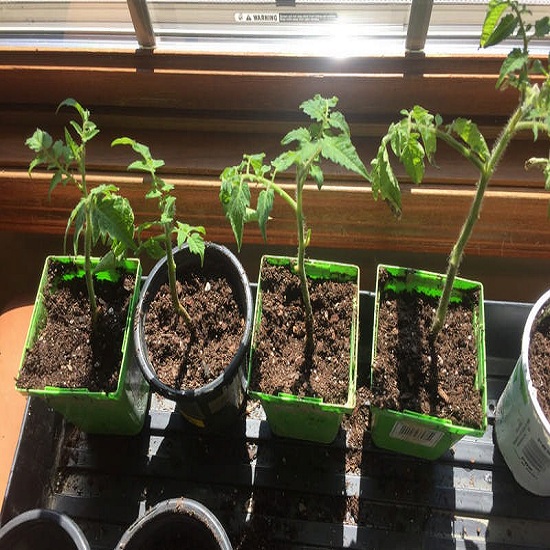
Save Seeds
Keep a tomato or two aside before the first frost so you can harvest its seeds.
The seeds you save from your hybrid tomatoes won’t produce offspring that look exactly like the parent plant. The seeds you save from your heirloom tomato plants will produce the same fruit the following season.
Tomato seed saving is exceptionally easy because of how simple the plant is. However, you may want to consider fermenting your tomato seeds before planting them next year for the greatest results.
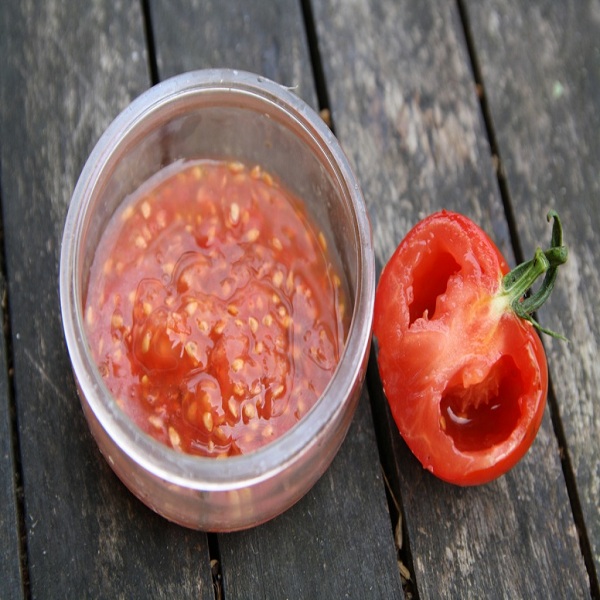
Ripen Them Up
By the time autumn arrives, these nightshades have lasted much too long, and we’ll totally get it if you decide to chuck your tomato plants in the compost bin and forget about this whole list. To avoid contaminating your compost with disease-causing microorganisms, avoid throwing away any diseased plants. Diseased vegetation should be burned out towards the end of the growing season. Ensure you rake up any leaves or stems and lift the plants up by the leaves to add to the fire.
Crop Rotation
Next spring, you should switch up what you grow in this raised bed.
Don’t forget that now that you’ve grown tomatoes in that part of your garden, next year you should plan to grow root vegetables there. Soil health must be preserved over time, and crop rotation plays a significant role in doing so. When you rotate your crops, different plant species use and replenish the same nutrients over time.
As with anything else, wrapping up your tomato plants for the season is a question of personal preference and advance preparation. You have the option of allowing them to continue developing for a little while longer, bringing them inside, or giving up.
Whatever you choose, you’ll be bitten by the tomato growing bug again next spring and will be right back at it.

